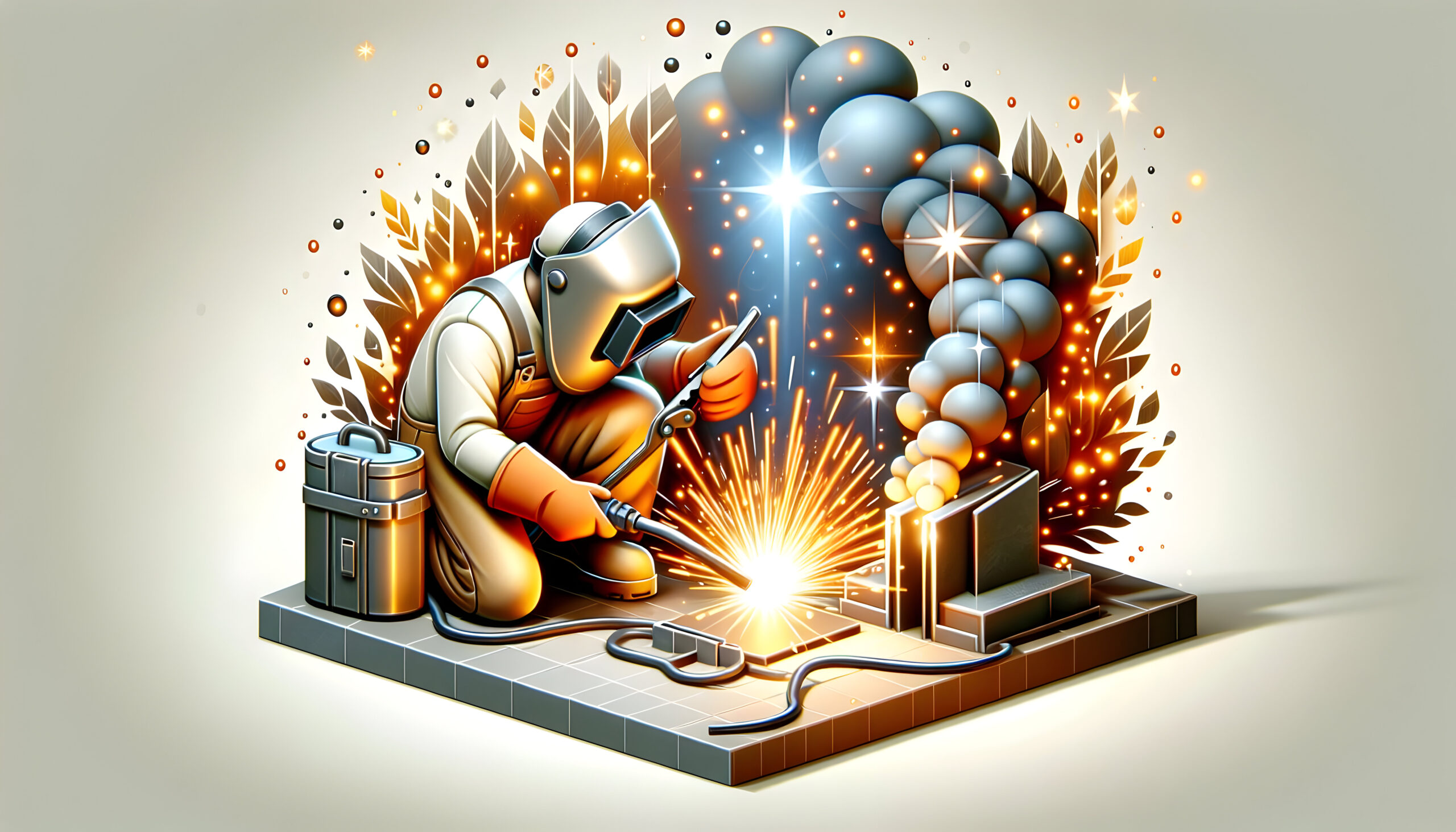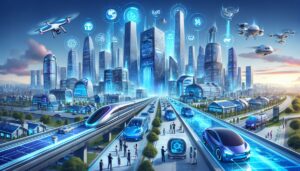How One Former SpaceX Engineer’s Robotic Blacksmith Army is Revolutionizing Manufacturing
Standing in a modern factory floor, witnessing a robotic blacksmith army reshape metal with precision and grace, I’m struck by the profound implications this technology holds for our industrial future. This revolutionary approach to metal fabrication combines advanced artificial intelligence with precise robotics, creating a system that could fundamentally alter how we produce everything from vehicles to aerospace components. The seamless dance of these machines, working in perfect harmony, represents a watershed moment in manufacturing history.
The manufacturing landscape stretches before us like a vast canvas of possibility, where traditional methods intersect with cutting-edge automation in unprecedented ways. For decades, the sheet metal industry has dominated production, generating an astounding $250 billion annually. Every time you step into your car or board an airplane, you’re essentially surrounding yourself with the products of this massive industry. Even the smartphone in your pocket relies on precisely formed metal components, showcasing the ubiquitous nature of sheet metal manufacturing in our daily lives.
We strongly recommend that you check out our guide on how to take advantage of AI in today’s passive income economy.
Table of Contents
The Evolution of Metal Manufacturing
The story of metal manufacturing is one of persistence and innovation. Traditional methods have remained largely unchanged for over a century, but the emergence of the robotic blacksmith army represents a paradigm shift in how we approach metal fabrication. The innovation lies not just in the technology itself, but in its ability to combine the precision of modern robotics with the intuitive craft of traditional blacksmithing.
In the heart of this manufacturing revolution, the robotic blacksmith army employs sophisticated AI-driven robots that work with a level of coordination that would make master craftsmen proud. These machines don’t simply follow predetermined paths; they actively respond to the material they’re working with, adjusting their approach in real-time based on sophisticated sensor feedback and advanced algorithms.
Breaking Free from Traditional Constraints
The constraints of conventional manufacturing have long been a barrier to innovation. Current factories require massive investments, often exceeding $150 million, and occupy spaces that could house several football fields. These enormous facilities, with their three-story-tall stamping presses extending both above and below ground, represent the old guard of manufacturing. The robotic blacksmith army shatters these limitations, offering a more agile and adaptable solution that can fit within more modest facilities.
Traditional manufacturing methods are inherently rigid, requiring extensive retooling for even minor design changes. This inflexibility has stifled innovation and limited customization options. The robotic blacksmith army technology eliminates these constraints, enabling rapid adaptation to different products and specifications. A single manufacturing cell can transition seamlessly from producing automotive components to aerospace parts within hours, demonstrating unprecedented versatility in industrial production.
Intelligence Meets Industry
The intelligence driving the robotic blacksmith army represents a quantum leap in manufacturing capability. Each robot operates as part of a coordinated system, guided by sophisticated AI that learns and adapts with every part produced. The system’s neural networks process vast amounts of sensor data in real-time, making micro-adjustments to ensure perfect forming operations. This combination of mechanical precision and artificial intelligence creates a manufacturing platform that continuously improves its performance.
Advanced scanning technology integrated into the robotic blacksmith army allows for precise replication of existing parts, opening new possibilities in replacement component manufacturing. This capability proves invaluable for maintaining vintage aircraft, classic automobiles, and industrial equipment where original specifications may be lost to time. The system can scan an existing part, create a digital model, and reproduce it with remarkable accuracy, all within a fraction of the time required by traditional methods.
Material Innovation and Flexibility
One of the most exciting aspects of the robotic blacksmith army is its ability to work with materials that have traditionally been challenging to form. Titanium, advanced alloys, and high-strength steels can be shaped with unprecedented precision, opening new possibilities in aerospace, defense, and high-performance applications. This breakthrough in material processing could lead to lighter, stronger, and more efficient products across multiple industries.
The Economics of Advanced Manufacturing
The financial implications of this robotic blacksmith army technology extend far beyond simple cost savings. While traditional manufacturing requires massive upfront investments in tooling and facilities, this new approach allows for more gradual scaling of production capacity. Manufacturers can start with a single cell and expand as demand grows, significantly reducing initial capital requirements.
The robotic blacksmith army’s flexibility also changes the economics of custom manufacturing. Traditional methods require significant setup costs for each new part, making small production runs prohibitively expensive. With this new technology, switching between different parts requires only a software update, making small-batch production economically viable for the first time.
Democratizing Manufacturing
Perhaps the most profound impact of the robotic blacksmith army lies in its potential to democratize manufacturing. Small companies and innovative designers can now access production capabilities that were previously reserved for large corporations. This accessibility could spark a renaissance in custom manufacturing, where unique designs become as economically viable as mass-produced items.
The implications for product development are equally significant. With the robotic blacksmith army, designers can rapidly prototype and iterate their designs without the traditional constraints of tooling costs. This freedom to experiment could lead to more innovative and optimized products across all industries.
Community Impact and Local Manufacturing
The potential for local manufacturing revival through robotic blacksmith army technology cannot be overstated. Unlike traditional factories that become obsolete when product lines change, these adaptable systems can be quickly reconfigured for different products. This flexibility ensures sustained economic activity in local communities and could help reverse decades of manufacturing decline in many regions.
The environmental benefits of distributed manufacturing are also significant. By producing goods closer to their point of use, we can significantly reduce transportation costs and associated carbon emissions. The robotic blacksmith army enables this distributed model while maintaining the efficiency and quality standards of centralized production.
Future Implications
Looking ahead, the robotic blacksmith army system points toward a future where manufacturing becomes more responsive and adaptable to local needs. This shift could fundamentally change how we think about production and consumption. Instead of massive centralized factories producing millions of identical items, we might see networks of smaller, more flexible facilities serving their local communities with customized products.
The implications for innovation are equally exciting. As more organizations gain access to advanced manufacturing capabilities through robotic blacksmith army technology, we’ll likely see an explosion of new products and designs. This democratization of manufacturing could lead to a new era of industrial creativity, where small teams can bring their ideas to market without the traditional barriers of scale.
Conclusion
The robotic blacksmith army represents more than just technological advancement; it embodies a fundamental shift in how we approach manufacturing. This innovation promises to make production more accessible, adaptable, and responsive to changing needs while maintaining the efficiency and reliability of traditional methods.
As this transformative technology continues to evolve, it paves the way for a manufacturing renaissance where creativity and customization become standard features rather than expensive luxuries. The robotic blacksmith army could lead us into a future where local production centers serve their communities with unprecedented flexibility and efficiency, fundamentally changing our relationship with manufactured goods and the way we build our world.
The journey from traditional manufacturing to this new paradigm is just beginning, but the potential impact of the robotic blacksmith army on industry, economy, and society is immense. As we stand on the brink of this manufacturing revolution, one thing becomes clear: the future of production will be more adaptable, more accessible, and more innovative than ever before.

We strongly recommend that you check out our guide on how to take advantage of AI in today’s passive income economy.



